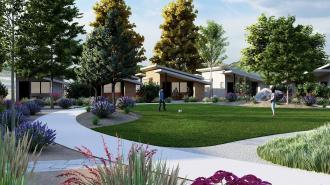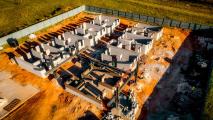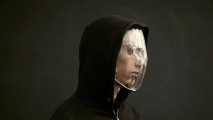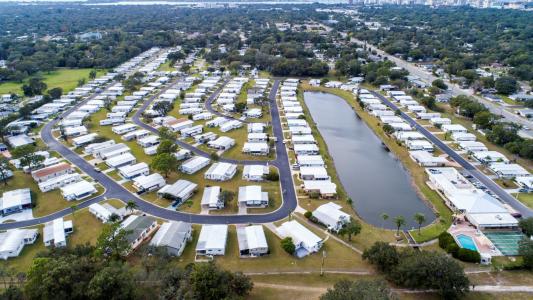Salt Lake City has approved a tiny home village to help Utahns experiencing chronic homelessness get back on their feet. “Tiny homes are happening!” tweeted Mayor Erin Mendenhall “The Other Side Village, our city’s first tiny home community, will bring a new housing option for unhoused residents and create a supportive community for those who need it most.”
The challenge: About half a million people are experiencing homelessness on any given day in the US, and for most of them, the situation will be temporary — they may have lost their job and will be back in a home once they find a new one.
More than one-fourth of the homeless population is chronically homeless, though. Those people have been homeless for at least a year — either continuously or in several stretches — and their situation is often linked to addiction, physical disability, or mental illness.
While accessible and affordable housing is the most important factor in ending homelessless, people experiencing chronic homelessness often need more than just a roof over their heads — they need mental healthcare, substance abuse treatment, and other forms of support.
“The Other Side Village [will] create a supportive community for those who need it most.”
Erin Mendenhall
What’s new? On October 18, the Salt Lake City Council unanimously approved the creation of the Other Side Village, a tiny home village where people experiencing chronic homelessness will be able to get the support they need.
The $13.8 million project is being spearheaded by local nonprofit the Other Side Academy and is expected to welcome its first residents by the end of the summer of 2023.
The Other Side Village: The first phase of the Other Side Village project will be the creation of a pilot tiny home village on an 8-acre parcel of land owned by Salt Lake City.
The pilot village will include 85 tiny homes: 54 for people experiencing chronic homelessness, 6 for staff, and 25 for a Community Inn with nightly rentals for the public — those rentals are estimated to cover about 10% of the project’s operating costs.
Each 400-square-foot tiny home will include a bedroom, a living area, a kitchen with appliances, and a bathroom with a shower. When residents arrive, the fridge will be full of food, and the bathroom will be stocked with toiletries.
The village will include a bodega and a community center with a medical clinic, a mental health clinic, a social services clinic, and more. It will also have retail businesses and a social enterprise building, which will include a thrift store and a bakery.
People experiencing chronic homelessness will have to pay some rent to live in the tiny home village, but officials will help them find a source of income — possibly by working in the village itself — or help them secure Social Security Disability Insurance or a rental voucher.
Residents will be able to live in the Other Side Village as long as they want, but only if they agree to stay sober — the community will be drug- and alcohol-free. Officials will try to help those who violate the rule, but if they refuse to stop drinking or using drugs, they will be evicted.
Salt Lake City could expand the tiny home village to include 430 homes on 40 acres of land.
Looking ahead: Salt Lake City is leasing the 8 acres of land to the Other Side Academy for $1 a year for 40 years, but the group will have to cover all other costs of the project itself.
It’s already secured $4 million from the Utah Homelessness Council and plans to use donations to cover the rest of the upfront costs. Once the village is operational, the group expects it to be self-sufficient thanks in part to its businesses and nightly rentals.
If all goes well with the pilot, Salt Lake City could choose to expand the tiny home village to include 430 homes on 40 acres of land — potentially helping hundreds of people experiencing chronic homelessness get off the streets permanently.
We’d love to hear from you! If you have a comment about this article or if you have a tip for a future Freethink story, please email us at [email protected].






